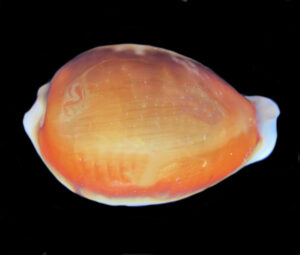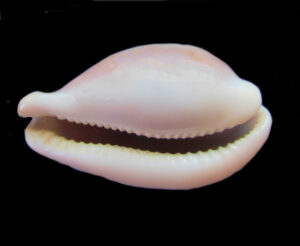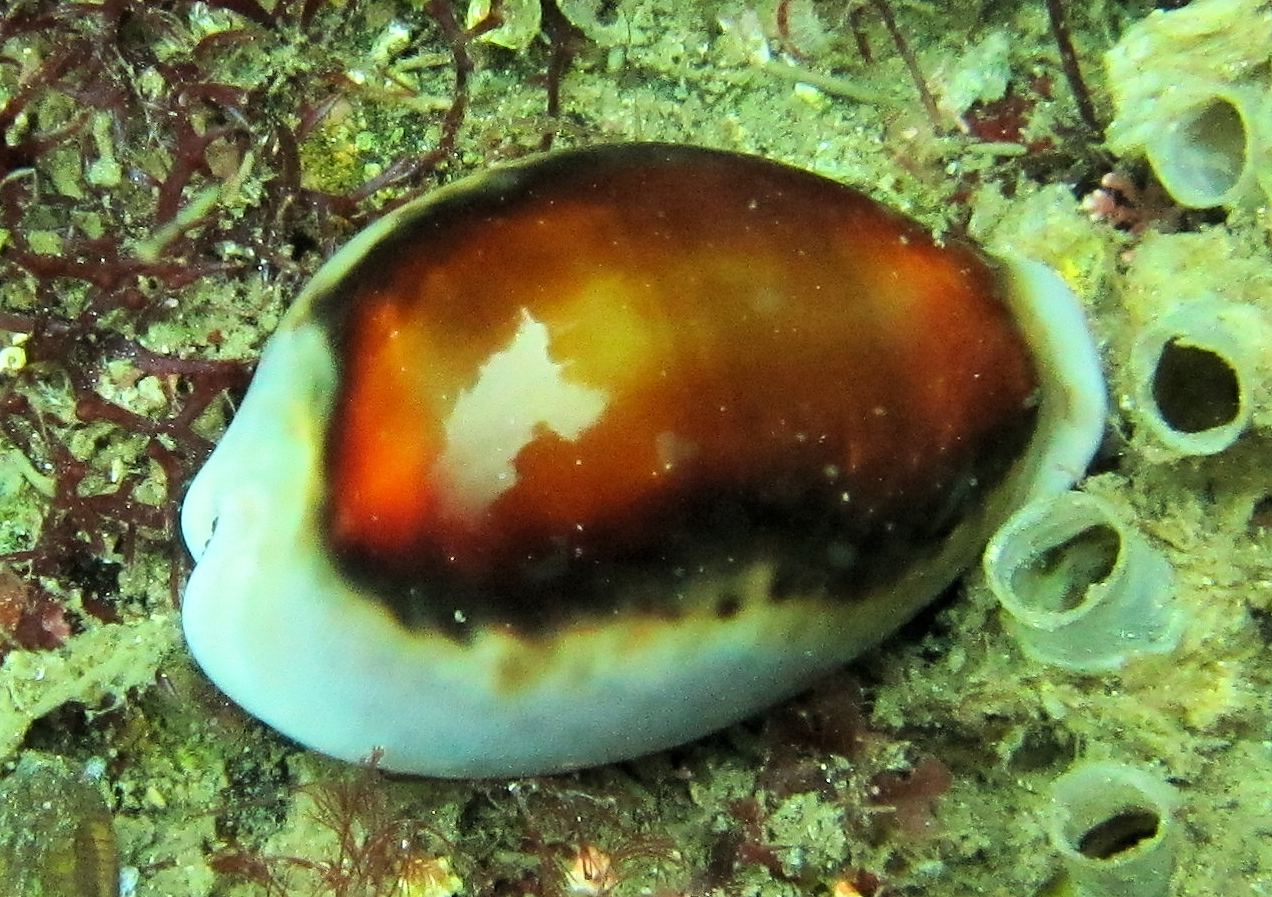Chestnut Cowry Shell, Neobernaya spadicea

 Chestnut Cowry Shell, Neobernaya spadicea. Size: 5.4 cm (2.1 inches) x 3.2 cm (1.3 inches). Shell collected off the beach in the greater Bahía de los Ángeles area, Baja California, May 1992. Collection, photograph and identification courtesy of Bob Hillis, Ivins, Utah.
Chestnut Cowry Shell, Neobernaya spadicea. Size: 5.4 cm (2.1 inches) x 3.2 cm (1.3 inches). Shell collected off the beach in the greater Bahía de los Ángeles area, Baja California, May 1992. Collection, photograph and identification courtesy of Bob Hillis, Ivins, Utah.
 Chestnut Cowry, Neobernaya spadicea. Underwater photograph taken in coastal waters of San Diego, California, March 2014. Photograph courtesy of Bob Hillis, Ivins, Utah.
Chestnut Cowry, Neobernaya spadicea. Underwater photograph taken in coastal waters of San Diego, California, March 2014. Photograph courtesy of Bob Hillis, Ivins, Utah.
The Chestnut Cowry, Neobernaya spadicea (Swainson, 1823), is a gastropod mollusk that is a member of the Cypraeidae Family of Cowries. The species name, “spadicea” is Latin for “the color of fresh dates” in reference to the chestnut coloration. The shell is oval shaped. The dorsal surface of the shell is marked by a large irregular patch, chestnut brown in color, surrounded by a dark brown band. The sides and base of the shell are bluish white in color. The Chestnut Cowry shells reach a maximum of 6.5 cm (2.6 inches) in length and 3.9 cm (1.5 inches) in height.
Chestnut Cowries are found on rocky ledges and on sheltered rock surfaces from the subtidal zone to depths up to 15 m (50 feet). They are found along the Pacific Coast of the Baja Peninsula from Cedros Island, Baja California, north to Central California. They consume anemones and tunicates and in turn are preyed upon by octopus, rockfish and sea stars.
Synonyms for the species include Zonaria spadicea and Cypraea spadicea.